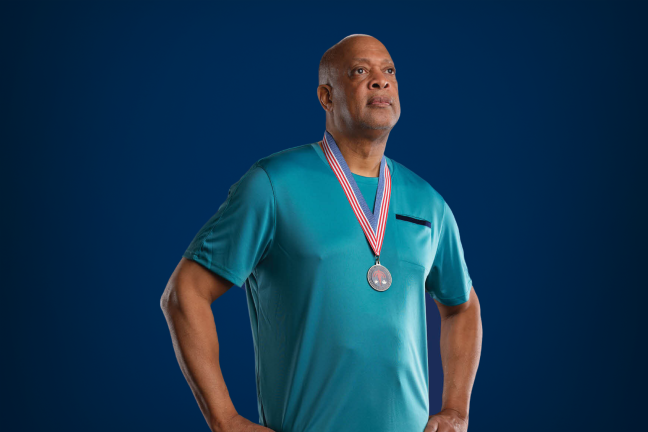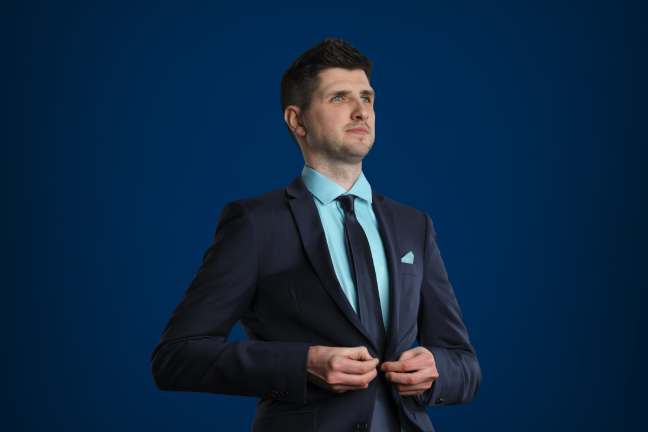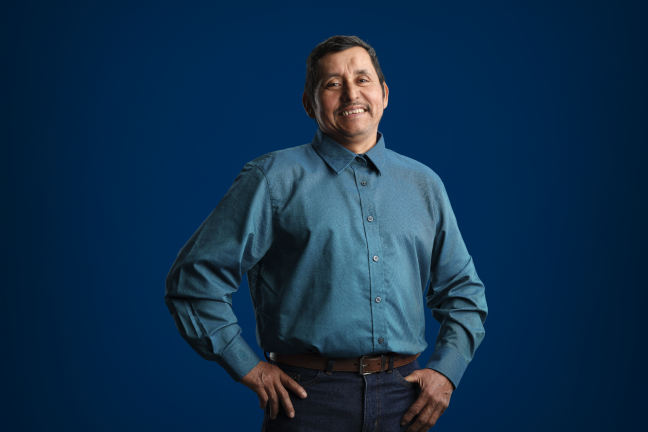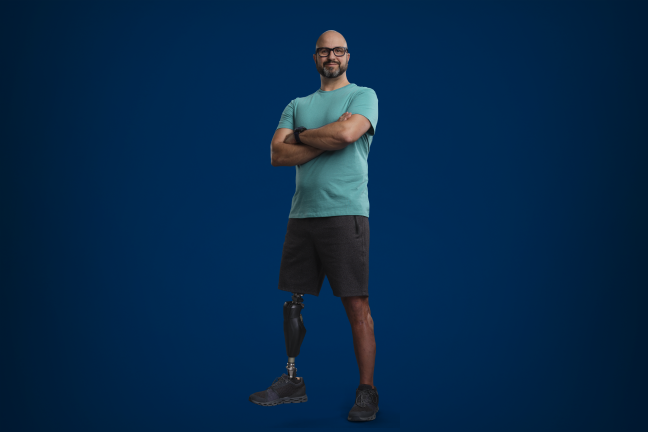1 in 6 black men will develop prostate cancer, and unfortunately, Rick was no exception. But he refused to become a statistic.


Amy Satterfield owes a lot to her Apple Watch, her husband's Googling skills and a minimally-invasive surgical approach to valve repair.
In August of 2021, Amy and her husband returned home in Troy after attending a friend's wedding shower.
"It had been a relaxing Saturday, and I was sitting quietly with my husband," she said. "I was fiddling with my Apple Watch, and it showed my heart rate was 126."
That's too high for anyone, as the normal range is 60 to 100 beats per minute. But it was also especially strange for Amy. She's a yoga teacher who owns Explore Yoga Studio in Troy. Besides her active yoga practice, she's also an enthusiastic cyclist and walker who occasionally kickboxes and kayaks. She wrote it off as a glitch with her watch. "I felt fine," she said. Off and on for the next few hours, she practiced some deep-breathing meditation techniques. They didn't calm her heart rate. Her husband Andy, a first responder, grew increasingly concerned. "He insisted we go to the hospital," Amy said.

Waiting in the emergency department of Corewell Health's Beaumont Hospital, Troy, she could tell something was wrong. She felt short of breath as specialists surrounded her for a flurry of tests. They quickly found the problem. Amy, diagnosed with a heart murmur as a child, had fluid on her lungs and was experiencing heart failure. And she learned she needed heart surgery to either repair or replace her faulty mitral valve. The news shocked Amy, who had long considered herself a poster child for healthy living.
"Not only do I work out a lot, but I also eat mostly plant-based foods," she said. "I've always felt strong and almost invincible, and the fact that I had a heart murmur, which I'd known about since childhood, never kept me from being as active as I wanted." And beyond the initial shock, the prospect of open-heart surgery terrified her. Typically, the procedure involves breaking open a patient's sternum to spread the ribs wide. It's painful and often requires long weeks of uncomfortable recovery. That seemed like an eternity to Amy.
With her husband by her bedside, they started Googling. Surely, he said to her, there must be a better way to fix her heart. The two quickly found out that there is a less invasive procedure in which surgeons approach the heart from the side of the body, between the ribs, rather than cracking the sternum open. Even better, they learned that Francis Shannon, MD, a cardiac surgeon at Corewell Health's Beaumont Hospital, Royal Oak, was an experienced minimally invasive valve surgeon. They contacted Dr. Shannon, who agreed to accept the case. The next day, Amy transferred from Troy to Beaumont Hospital's Royal Oak intensive care unit by ambulance.
Repairing a leaky valve
Valvular heart disease occurs in about 2.5% of the population when one of the heart's four valves doesn't function properly. And in about 10 to 15% of those cases, the problem may become severe enough to require surgical repair or replacement. In Amy's case, the defect was in the mitral valve. The valve leaflets–the flaps that allow it to open and close–overlap too much. That impedes its ability to control the daily 2,000 gallons of blood pumped through the heart.

"The leaflets get overstretched," Dr. Shannon said. "And while the valve and the heart work very well for many years, at some point, the heart begins to dilate because of this leakage. The heart just gets too big." The result, he said, is heart failure.
Entering Amy's thorax through the right rib cage, Dr. Shannon and his team repaired the leaky valve by sewing the two sides together. And he inserted a metal ring, which further supports the mitral valve, which should let her heart beat properly for years. Physicians have performed such surgeries for decades, and the intricacies of valve repair drew Dr. Shannon to the field early in his career.
About 20 years ago, however, surgeons began using this minimally invasive technique. Of course, it's still major surgery and requires placing the patient on a heart and lung machine. "This approach leaves a scar of about three and a half inches versus six or eight," Dr. Shannon said. "No bones are broken." And while recovery is still painful, nerves recover in about six weeks. Some surgeons use robotics to perform the procedure, but Dr. Shannon prefers direct vision. "Studies have shown it's as effective, and because it's faster, patients spend about 50% less time on the heart-and-lung machine."
Amy was lucky. Because of her excellent underlying health and attentiveness to her symptoms, Dr. Shannon operated while she was in the early stages of heart failure. “Over time, her heart would have become more tired from doing too much work," he said. "Untreated, the heart can fail, usually in three to five years."

Flexing her way through recovery
After 12 days in intensive care, Amy went home. In addition to the rehab exercises prescribed by her doctors, "I created a healing plan and path to recovery," she said. She is also devoted to many types of complementary medicine, including massage, acupressure and myofascial release, and slowly began incorporating those approaches into her recovery.
She said those methods, daily meditation and other healthy lifestyle habits helped her heal faster. "Two weeks post-surgery, I was back at the studio teaching gentle yoga," she said. "By one month, I was back doing gentle yoga most days, walking and riding my bike." Amy, whose children are 25, 17 and 14, says the scar on her right side reminds her to stay grateful.
"When I come into my studio, I just sit here and take in how much I have to be thankful for," she said. "That includes my life, health, family and all the people who come here and let me teach." And it's made her committed to speaking up about her story, hoping it may encourage others with murmurs to be more attentive.
"Many people with this type of prolapse will never have to have surgery," Amy said. "And many are like me. They just never pay attention to it. But I should have been in better touch with my cardiologist." Dr. Shannon said that with this repair behind her, she'd likely have no more trouble.
"I've been doing this type of surgery since the early 1990s," he said, "and I see patients whose valve repairs are still intact and working well. It's gratifying to see. Minimally invasive mitral valve repair is one of the best operations that heart surgeons do, influencing the quality and quantity of a person's life."








